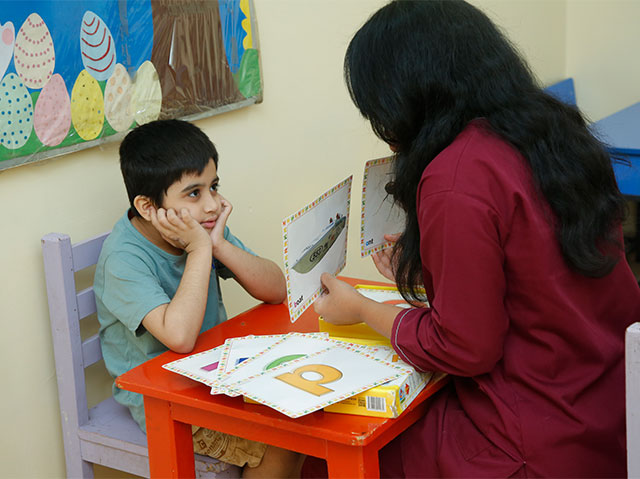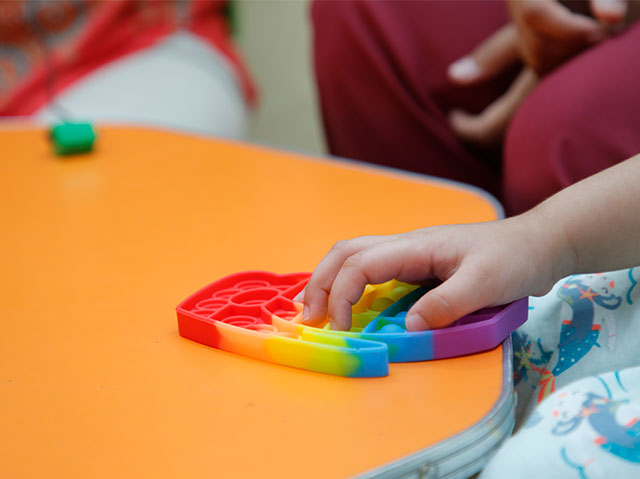01 .
Home
Major features to identify autism in a young child
Autism spectrum disorder (ASD) is a neurodevelopmental disorder that affects communication, social interaction, and behavior. It is usually diagnosed in children between the ages of two and three, although some signs may be apparent earlier. Early diagnosis and intervention are crucial in helping children with ASD to develop to their fullest potential. In this blog post, we will explore the major features that can help identify autism in young children.
- Delayed Language Development Delayed language development is one of the most common signs of autism in young children. Some children with autism may not start speaking until after the age of two, and others may only use a few words or phrases. Children with autism may also repeat words or phrases over and over again and have difficulty initiating or sustaining conversations.
- Repetitive Behaviors Repetitive behaviors are another hallmark of autism in young children. These behaviors can include hand-flapping, rocking back and forth, spinning, and lining up toys or objects. Children with autism may also have strict routines and rituals that they insist upon and become upset if they are disrupted.
- Repetitive Behaviors Repetitive behaviors are another hallmark of autism in young children. These behaviors can include hand-flapping, rocking back and forth, spinning, and lining up toys or objects. Children with autism may also have strict routines and rituals that they insist upon and become upset if they are disrupted.
- Sensory Sensitivities Many children with autism have sensory sensitivities, which means they may be overly sensitive or under-sensitive to certain sensory stimuli, such as sounds, lights, textures, or smells. This can cause discomfort, anxiety, or even pain in some cases.
- Lack of Pretend Play Children with autism may have difficulty with imaginative play or "pretend play." For example, they may not engage in games of make-believe or play with dolls, action figures, or toy cars in a way that mimics real-life scenarios.
- Difficulty with Transitions Children with autism may have difficulty with transitions, such as moving from one activity to another or changing locations. They may become upset or agitated when routines are disrupted, or when they are asked to do something they don't want to do.
- Fixation on Specific Objects or Topics Children with autism may become fixated on specific objects or topics, such as trains, animals, or numbers. They may talk about these things obsessively and have difficulty shifting their attention to other topics.
- Unusual Body Movements Children with autism may exhibit unusual body movements, such as flapping their hands, spinning in circles, or tiptoeing. These movements may be self-stimulating and can help the child to regulate their emotions or sensory input.
- Lack of Empathy Children with autism may have difficulty understanding or empathizing with the emotions of others. They may not notice when someone is upset or in pain, or they may not respond appropriately to social cues, such as offering comfort or help.
- Delayed Motor Skills Some children with autism may have delayed motor skills, such as walking or crawling. They may also have difficulty with fine motor skills, such as using utensils, writing, or manipulating small objects.
In conclusion, autism is a complex neurodevelopmental disorder that affects communication, social interaction, and behavior. While every child with autism is unique and may exhibit different symptoms, there are several major features that can help identify autism in young children. These features include delayed language development, repetitive behaviors, social interaction challenges, sensory sensitivities, lack of pretend play, difficulty with transitions, fixation on specific objects or topics, unusual body movements, lack of empathy, and delayed motor skills. If you suspect that your child may have autism, it is important to seek a professional evaluation as early as possible.
Programmes
Support Services
© 2025 IMPACT. All rights reserved


